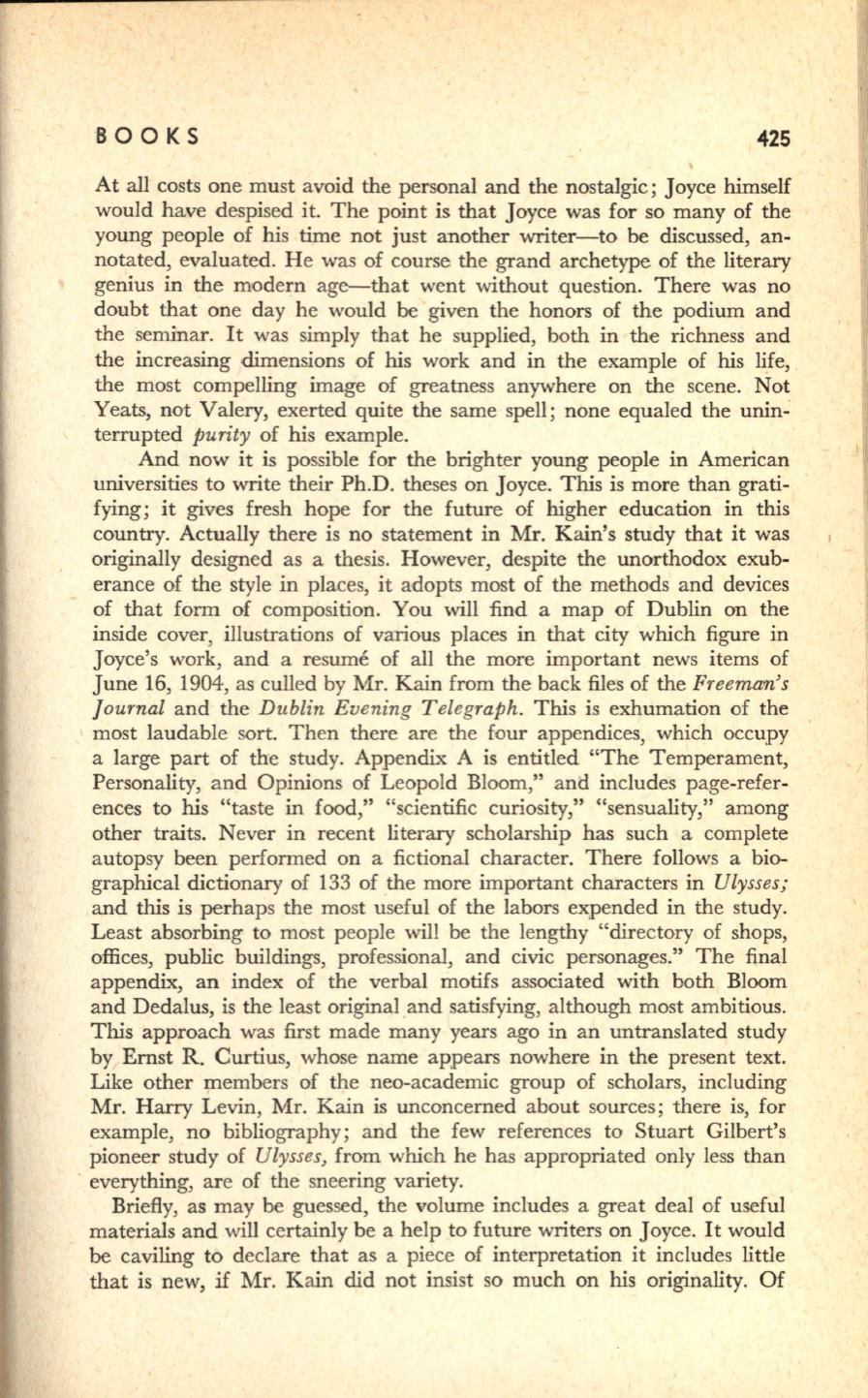
B 0 0 KS
425
At all costs one must avoid the personal and the nostalgic; Joyce himself
would have despised it. The point is that Joyce was for so many of the
young people of his time not just another writer-to be discussed, an–
notated, evaluated. He was of course the grand archetype of the literary
genius in the modern age-that went without question. There was no
doubt that one day he would
be
given the honors of the podium and
the seminar. It was simply that he supplied, both in the richness and
the increasing dimensions of his work and in the example of his life,
the most compelling image of greatness anywhere on the scene. Not
Yeats, not Valery, exerted quite the same spell; none equaled the unin_.
terrupted
purity
of his example.
And now it is possible for the brighter young people in American
universities to write their Ph.D. theses on Joyce. This is more than grati–
fying; it gives fresh hope for the future of higher education in this
country. Actually there is no statement in Mr. Kain's study that it was
originally designed as a thesis. However, despite the unorthodox exub–
erance of the style in places, it adopts most of the methods and devices
of that form of composition. You will find a map of Dublin on the
inside cover, illustrations of various places in that city which figure in
Joyce's work, and a resume of all the more important news items of
June 16, 1904, as culled by Mr. Kain from the back files of the
Freeman's
Journal
and the
Dublin Evening Telegraph.
This is exhumation of the
most laudable sort. Then there are the four appendices, which occupy
a large part of the study. Appendix A is entitled "The Temperament,
Personality, and Opinions of Leopold Bloom," anti includes page-refer–
ences to his "taste in food," "scientific curiosity," "sensuality," among
other traits. Never in recent literary scholarship has such a complete
autopsy been performed on a fictional character. There follows a bio–
graphical dictionary of 133 of the more important characters in
Ulysses;
and this is perhaps the most useful of the labors expended in the study.
Least absorbing to most people will be the lengthy "directory of shops,
offices, public buildings, professional, and civic personages." The final
appendix, an index of the verbal motifs associated with both Bloom
and Dedalus, is the least original and satisfying, although most ambitious.
This approach was first made many years ago in an untranslated study
by Ernst R. Curtius, whose name appears nowhere in the present text.
Like other ¥1embers of the neo-academic group of scholars, including
Mr. Harry Levin, Mr. Kain is unconcerned about sources; there is, for
example, no bibliography; and the few references to Stuart Gilbert's
pioneer study of
Ulysses)
from which he has appropriated only less than
everything, are of the sneering variety.
Briefly, as may be guessed, the volume includes a great deal of useful
materials and will certainly be a help to future writers on Joyce. It would
be
caviling to declare that as a piece of interpretation it includes little
that is new, if Mr. Kain did not insist so much on his originality. Of


